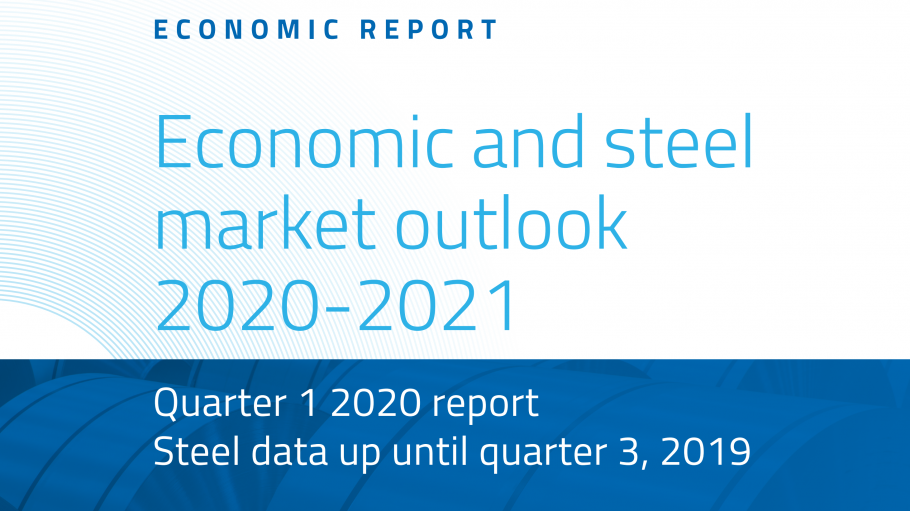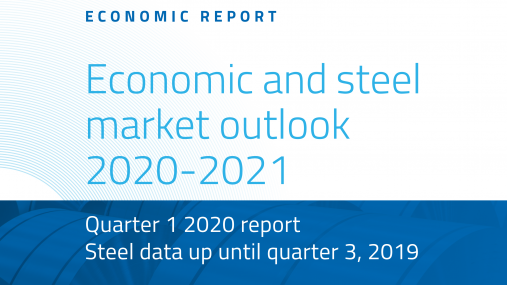
Publications » Economic and market outlook » Economic and steel market outlook 2020-2021, first quarter
Economic and steel market outlook 2020-2021, first quarter
Downloads and links
Recent updates

Apparent steel consumption fell by 3.1% year-on-year in the third quarter of 2019, a slight moderation compared to the drop recorded in the second quarter (-6.7%). The ongoing negative trend in steel demand is the result of the continued slump in EU’s manufacturing sector due to weakened exports and investment that has become more pronounced during the second and third quarter of 2019. Leading indicators suggest that the downturn continued in the remainder of 2019, albeit with some signs of stabilisation. No significant rebound is forecast before the second half of 2020.
The current downturn of the manufacturing sector in the EU is not likely to bottom out in the very short-term. Major risk factors are escalating trade wars between the US and several of its main trading partners (mostly China, despite the trade agreement signed on 15 January 2020 that has eased frictions) and persistent uncertainty regarding the final Brexit deal to be agreed by the end of 2020. These factors are set to weigh on trade conditions during 2020, and may even lead to a further deterioration in business sentiment and seriously
hamper investment growth. In this scenario, the EU steel sector would continue to be severely impacted, also having to cope with growing import distortions as well as persistently high import volatility as a result of the increase in the safeguard quotas and transfer mechanism of unused quarterly quota.

A milestone occasion to quickly and effectively restore affordable electricity, to relaunch the
decarbonization and strengthen the international competitiveness of the European steel
industry.
Brussels, 02 December 2025 – Unchanged negative conditions – U.S. tariffs and trade disruptions, economic and geopolitical tensions, protracted weak demand and still high energy prices – continue to weigh on the European steel market. EUROFER’s latest Economic and Steel Market Outlook confirms for 2025 another recession in both apparent steel consumption (-0.2%, unchanged) and steel-using sectors (-0.5%, revised from -0.7%). A potential recovery is expected only in 2026 for the Steel Weighted Industrial Production index (SWIP) (+1.8%, stable) and for apparent steel consumption (+3%, slightly revised from +3.1%) – although consumption volumes would still remain well below pre-pandemic levels. Steel imports retained historically high shares (27%), while exports plummeted (-9%) in the first eight months of 2025.
Fourth quarter 2025 report. Data up to, and including, second quarter 2025